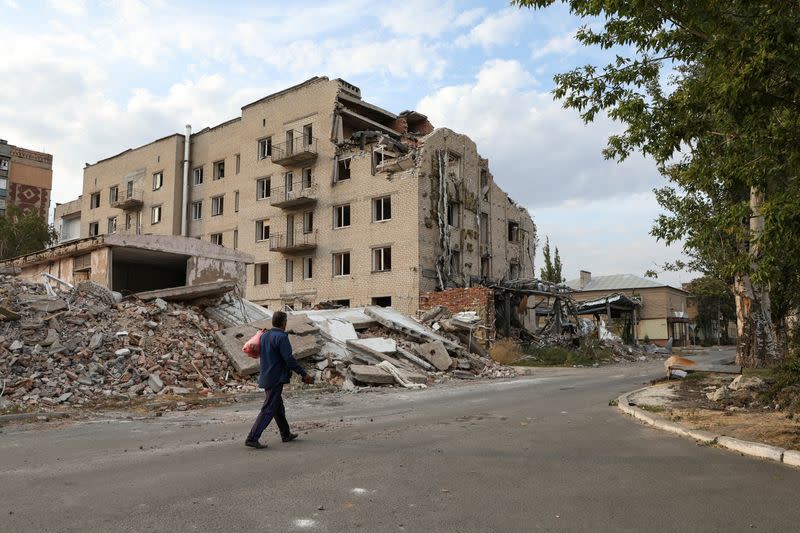EU plans 35 billion euro Ukraine loan, funded by Russian assets
BRUSSELS/KYIV (Reuters) -The European Commission proposed on Friday a loan of up to 35 billion euros ($39 billion) for Ukraine to help cover its increased needs after Russian destruction of its infrastructure.
The proposed loan, announced by Commission President Ursula von der Leyen on a visit to Kyiv, is part of a wider plan among G7 nations to raise funds using proceeds from Russian assets frozen to sanction Moscow for invading its neighbour.
"Relentless Russian attacks means Ukraine needs continued EU support," von der Leyen said in a post on X.
The loan proposal still needs approval by the European Parliament and by a qualified majority of the EU's 27 national governments. EU member states received the proposal on Friday, an EU diplomat said.
"We are now confident we can deliver this loan to Ukraine very quickly," von der Leyen told a news conference in Kyiv.
Ukraine is facing high and rising costs of more than two years of intensive warfare that have devastated its infrastructure. Russia has knocked out about 9 gigawatts (GW) of Ukraine's energy capacity.
The Commission said Ukraine's financing needs are expected to rise to 38 billion euros in 2025, 12 billion euros more than projections made in June.
The Group of Seven countries (G7) froze around $300 billion worth of Russian financial assets soon after Moscow's invasion of Ukraine in 2022. They pledged to use the funds to help their ally, but spent months discussing how exactly such a mechanism could work.
The EU in May struck a deal among its member states under which 90% of the proceeds would go into an EU-run fund for military aid for Ukraine, with the other 10% going to support Kyiv in other ways.
The assets are gaining exceptional interest because they are stuck, resulting in so-called windfall profits.
NEW MECHANISM PROPOSED
The Commission has also proposed a facility it calls the Ukraine Loan Cooperation Mechanism to support EU and G7 partners in issuing loans of up to 45 billion euros and to repay these loans.
The mechanism will be financed by the windfall profits, along with some contributions from EU members and other countries.
The package of proposals to back the loan comes in three parts, two of which relate to the mechanism. The third part is to extend the renewal period of the freeze on the central bank assets to 36 months from the current six months, the diplomat added. This move requires unanimity among member states.
The rollover would remain at six months for the rest of sectoral sanctions.
($1 = 0.8960 euros)
(Reporting by Charlotte Van Campenhout, Tassilo Hummel and Philip Blenkinsop, additional reporting by Anastasiia Malenko in KyivEditing by Alex Richardson and Gareth Jones)

